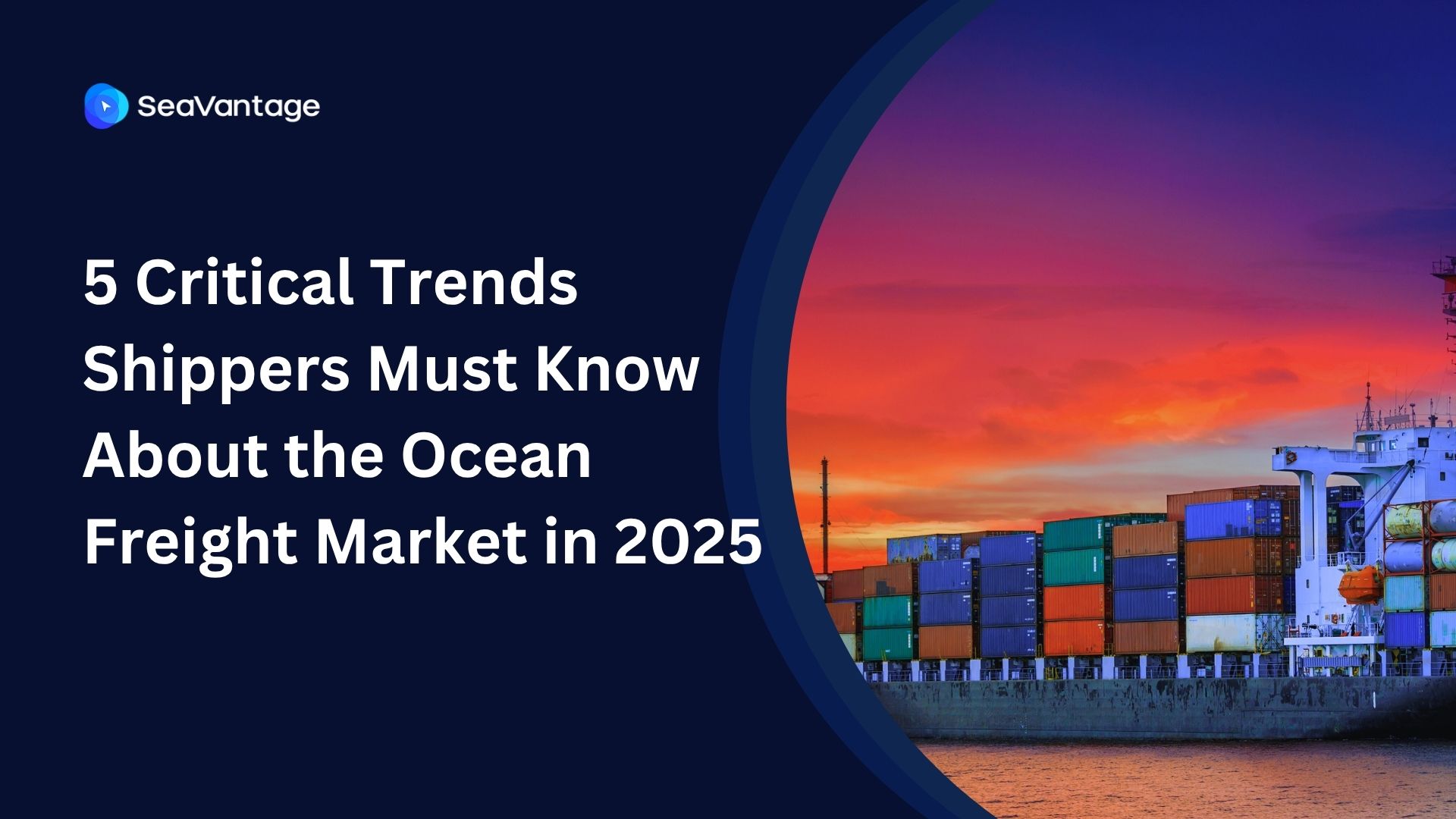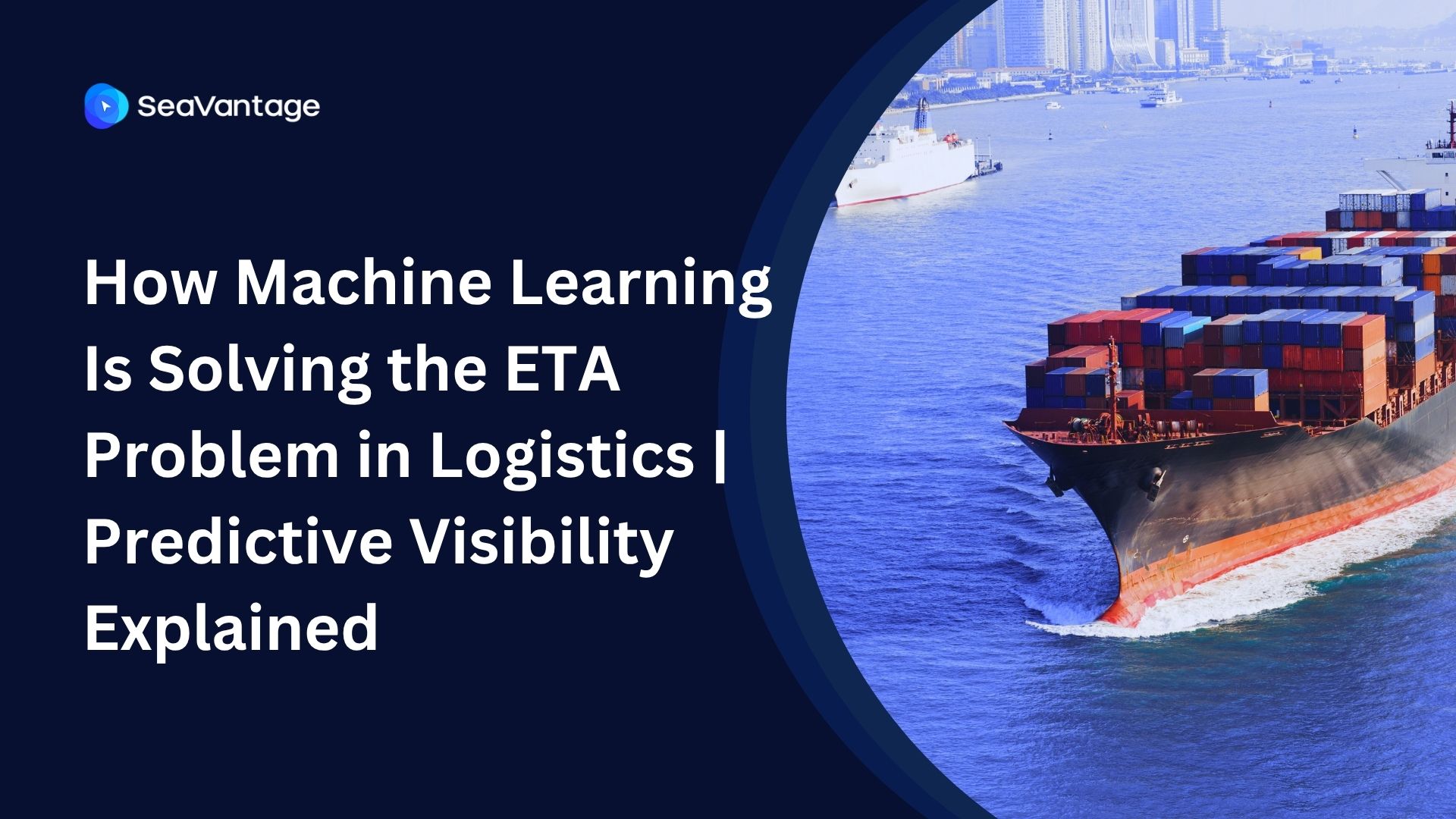How Machine Learning Is Solving the ETA Problem in Logistics | Predictive Visibility Explained

Beyond the Map App: How Machine Learning is Fixing the Billion-Dollar ETA Problem
We've all felt the frustration of a vague or inaccurate delivery window. That package you waited for all day that arrives hours late, or the grocery delivery that shows up early before you're home, can disrupt your schedule and erode trust. While this is a minor inconvenience for a consumer, when scaled up to global supply chains, the consequences of inaccurate Estimated Times of Arrival (ETAs) are measured in billions of dollars in lost productivity, halted production lines, and inefficiently used resources.
This lack of visibility is a critical pain point for logistics professionals. According to a study by IBM, 84% of chief supply chain officers cite a lack of visibility as their biggest challenge. This challenge has been amplified by recent global disruptions, from pandemics to driver shortages, exposing the brittleness of systems that rely on outdated information. Consequently, visibility is now a major investment priority, with Gartner reporting it is "among the top three funded investment initiatives" for 46% of supply chain organizations. For years, the industry has relied on real-time GPS tracking, a major leap forward from manual check-ins. However, simply knowing where a truck is at any given moment is not the same as knowing, with confidence, when it will arrive. The next revolution isn't just about tracking; it's about predicting. Powered by machine learning, predictive visibility is addressing the fundamental shortcomings of traditional ETA calculations and allowing supply chains to operate proactively instead of reactively.
Takeaway 1: Predictive Visibility Thinks Like a Truck Driver, Not a Tourist
Rudimentary ETAs from common routing APIs—the kind that power consumer map and navigation apps, are simply not accurate enough for the complex world of professional freight transportation. They provide a basic estimate based on distance and live traffic, but their core limitation is a critical one: they calculate travel time for a passenger car, assuming continuous movement, and fail to account for the operational realities of freight, such as mandatory driver rest periods, loading/unloading times, and regulatory stops.
The difference in accuracy is staggering. An ETA from a standard routing API, when predicted 24 hours in advance, can be off by an average of 16 hours. This level of inaccuracy makes planning all but impossible. This isn't just an inconvenience; it means warehouse teams can't be reorganized, loading docks sit idle or become congested, and production schedules are thrown into chaos, as noted by industry leaders like Leroy Merlin. In contrast, a sophisticated ETA calculation aided by machine learning achieves a mean absolute error of around 2 hours, even when calculated a full day ahead of a planned delivery. This precision allows businesses to make reliable operational decisions.
"One of the biggest added values of SeaVantage is that we can not only automatically share real time updates, but we can also anticipate delays by sharing predictive arrival times with our clients. This means that every client will be aware of delays well in advance allowing them to dynamically reorganize their resources their teams." - A SeaVantage Client.
Takeaway 2: It Learns From a Rich Library of Past Journeys
The accuracy of any machine learning model is directly tied to the quality and richness of the data it learns from. A simple calculator can only process the inputs it's given, but a machine learning algorithm can identify complex patterns and relationships by analyzing vast datasets. Best-in-class visibility platforms utilize a proprietary algorithm that sources over 200 data parameters to build a comprehensive picture of a journey.
This data is a powerful combination of real-time information and a massive library of historical data from countless previous shipments. This allows the algorithm to recognize subtle patterns that a simple calculator would miss, such as how long a particular driver typically waits at a specific warehouse on a Tuesday afternoon. To make this concept more tangible, here are some of the key data parameters used to build a highly accurate ETA:
- Historical Patterns: Average travel time for a specific shipping lane or average dwell time at a particular warehouse, broken down by day and time.
- Driver's Past Activity: The amount of time the driver has spent driving, working, and on breaks over the last 48 hours, which helps predict mandatory rest stops.
- Routing: Real-time remaining distance and driving time, continuously updated with live traffic information.
- Transport Orders: Specific details of the shipment, including scheduled loading and delivery appointment times and locations.
Crucially, a sophisticated model understands that these patterns vary by region. For example, freight in Europe is subject to heavy regulation around mandatory driver breaks and frequent cross-docking. In contrast, US freight transportation often involves more direct, longer hauls. A truly intelligent algorithm must learn from these regional nuances to produce an ETA that reflects the real-world operational context, wherever the shipment may be.
Takeaway 3: It Actively Cleans Up "Dirty" Real-World Data
Real-world data is often imperfect. Before a reliable prediction can be made, a sophisticated machine learning model must first clean and correct this "corrupt" information. This data cleansing process is a critical, automated step that distinguishes a professional-grade ETA from a basic one.
One major source of error comes from the limitations of GPS technology itself. Factors like "urban canyons", streets lined with tall buildings that cause satellite signals to bounce, can create inaccurate location pings. Atmospheric fluctuations and malfunctioning receiver hardware can also corrupt location data. These inaccuracies aren't just about location pings being off by a few meters; they can fundamentally mislead the algorithm into thinking a driver is moving when they are idle (or vice versa), corrupting the entire travel time calculation.
Beyond GPS issues, data can be corrupted in numerous other ways, often due to simple human error or system inconsistencies. Common examples include:
- A carrier mistakenly assigning the wrong truck to a transport order in their system.
- An address that contains spelling mistakes and has not been properly geocoded.
- A Transport Management System (TMS) reporting inconsistent timestamps for key events like loading and departure.
A key function of the machine learning model is to automate the data cleansing process. It uses advanced filtering, smoothing, and de-noising algorithms to identify and correct these inconsistencies. For instance, the system can detect incorrect geocodes and suggest alternative locations. This ensures that the final ETA is calculated using only the most accurate and reliable information available.
Conclusion: A Glimpse into the Future of Logistics
The evolution from reactive tracking to predictive visibility marks a fundamental shift in how supply chains are managed. By harnessing the power of machine learning, logistics operators are no longer just watching dots move on a map; they are proactively managing disruptions, optimizing resources, and providing a level of service reliability that was previously impossible. Top platforms now achieve, on average, 95% ETA accuracy up to 24 hours ahead of a delivery. This technology allows teams to manage by exception, focusing their energy on solving problems before they impact the customer.
This move toward predictive power is just the beginning. The same principles of learning from massive, complex datasets can be applied to other entrenched logistics challenges. As these predictive algorithms become even more powerful, what other complex supply chain challenges—from optimizing fuel consumption to predicting warehouse capacity—will they solve next?
2025년 9월, 주요 글로벌 항만에서 어떤 운송사가 가장 긴 선박 체류 시간을 기록했는지 확인해보세요. 트렌드를 비교하고, 지연을 파악하며, 전체 항만 데이터를 통해 운송 전략을 최적화할 수 있습니다.
2025년 8월, 주요 글로벌 항만에서 어떤 운송사가 가장 긴 선박 체류 시간을 기록했는지 확인해보세요. 트렌드를 비교하고, 지연을 파악하며, 전체 항만 데이터를 통해 운송 전략을 최적화할 수 있습니다.
2025년 7월, 주요 글로벌 항만에서 어떤 운송사가 가장 긴 선박 체류 시간을 기록했는지 확인해보세요. 트렌드를 비교하고, 지연을 파악하며, 전체 항만 데이터를 통해 운송 전략을 최적화할 수 있습니다.
Get the latest November 2025 ocean freight insights. Learn the five market shifts shaping carrier strategy, congestion risks, trade tensions, and shipper planning.
Discover how machine learning is fixing the billion-dollar ETA problem by delivering accurate, predictive visibility for global supply chains.
Explore October 2025 global port dwell time data. See which ports and carriers led in efficiency across Antwerp, Busan, Long Beach, Rotterdam, and Singapore.



.svg)







.png)